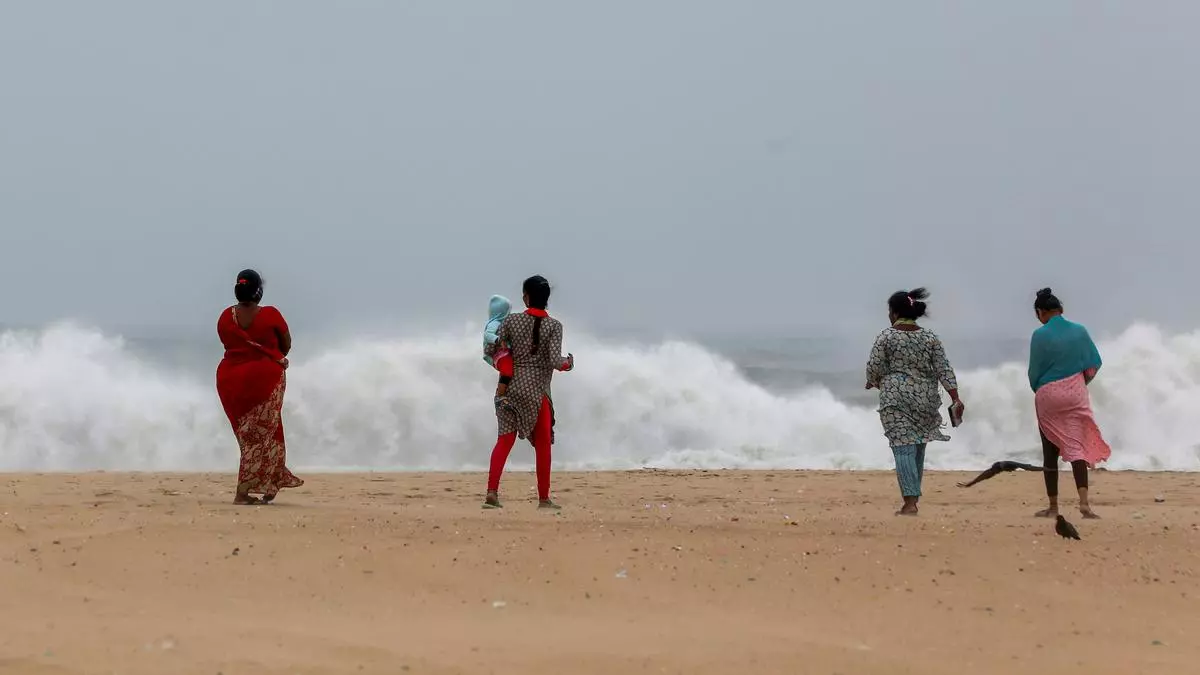 |
|
The India Meteorological Department (IMD), a usually reliable source for weather predictions, experienced an unusual setback in its forecast for Cyclone Fengal. Initially, the IMD predicted a deep depression over the south-west Bay of Bengal, off the coasts of Tamil Nadu and Sri Lanka. However, as the situation developed, the IMD successively downgraded its prediction. By Friday morning, the IMD's forecast suggested that the deep depression would likely weaken and cross northern Tamil Nadu as a mere depression, a significantly less severe weather event. This dramatic downscaling was a surprising reversal of their earlier prediction, demonstrating a notable failure in their forecasting methodology. The unexpected intensification of the weather system into a full-blown cyclone directly contradicts their earlier, more subdued assessment, highlighting a critical lapse in their predictive capabilities. This error underscores the inherent complexities of accurately predicting cyclone formation and intensity, emphasizing the need for continued advancements in meteorological modeling and prediction techniques.
The IMD's error is particularly significant given its generally strong track record in predicting cyclones in the Bay of Bengal and Arabian Sea. Over the past decade, the IMD has established a reputation for accuracy in tracking the evolution, path, and landfall of numerous cyclones. This instance, however, represents a rare deviation from their normally high standards. The fact that the department significantly underestimated the cyclone’s potential is a cause for concern, prompting a re-evaluation of their forecasting models and processes. The incident raises questions about the potential limitations of current prediction models, particularly in capturing the dynamic and sometimes unpredictable nature of tropical cyclone development. Investigating the reasons behind the inaccurate prediction is crucial not only to improve future forecasts but also to ensure public safety during severe weather events. The potential for significant damage and loss of life associated with inaccurate cyclone predictions emphasizes the critical need for accurate and timely weather information.
Adding to the unusual nature of the situation, a group of amateur weather bloggers in Tamil Nadu accurately predicted the cyclone's formation several hours before the IMD issued its revised prediction. These bloggers, utilizing their own resources and observation skills, observed a sudden surge in activity at the core of the deep depression early Friday morning. This early identification, made before official confirmation by the IMD, highlights both the challenges faced by meteorological agencies in predicting complex weather systems and also the potential value of citizen science and alternative sources of weather information. The contrast between the initial IMD forecast and the amateur bloggers' accurate predictions raises questions about the access to information, the sophistication of utilized tools, and the potential for improved collaboration between official agencies and citizen scientists in weather forecasting. The experience points toward the potential for augmenting professional meteorological services with data contributed from various sources for improved predictions.
The IMD’s retraction of its initial forecast and subsequent issuance of a cyclone warning serves as a crucial case study for improving forecasting techniques. The department's admission of error indicates a willingness to acknowledge limitations and learn from the experience. The incident highlights the necessity of continuous improvement in weather forecasting models, incorporating advanced technology and data analysis to increase accuracy and timeliness of predictions. The integration of diverse data sources, including satellite imagery, radar observations, and potentially citizen science contributions, could further enhance the accuracy of forecasts. The IMD’s response to this challenge offers a valuable opportunity to refine their processes, enhancing their ability to provide accurate and reliable information to the public during future severe weather events. Further research and analysis into the specific reasons for the inaccurate prediction will be crucial to preventing similar incidents in the future. This instance serves as a reminder of the dynamic nature of meteorological events and the importance of constant vigilance in monitoring and predicting their development.
Source: Cyclone Fengal: IMD goes back to drawing board, deep depression over Tamil Nadu-Sri Lanka coasts
